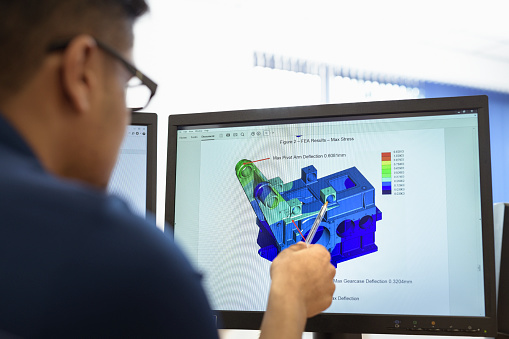Finite element method


What is the Finite Element Method?
The finite element method (FEM) is a powerful numerical method used in engineering and applied mathematics to analyze and solve a wide range of physical and structural problems. It has found its application in fields such as mechanical design, civil engineering, aerospace engineering, biomechanics and many others. Here are the key concepts and steps of the finite element method:
- Problem formulation: The first step is to clearly define the physics problem. This includes understanding the structure to be examined, the forces involved and the desired results such as stress distributions, deformations or heat transfer.
- Discretization: The object or system being analyzed is divided into a number of smaller, simpler units known as "finite elements." This discretization turns a continuous problem into a discrete problem that is easier to analyze. The elements are often triangles, squares, tetrahedrons or other simple shapes.
- Selecting the element type: The type of elements (e.g. beam, plate, shell, solid elements) depends on the type of problem and the geometry of the structure. Each element has its own properties and equations.
- Definition of material properties and boundary conditions: Each element is equipped with material properties such as elastic modulus, density and thermal conductivity. In addition, boundary conditions and external loads such as forces, pressures or temperatures are defined.
- Establishment of the element equations: An equation is drawn up for each element that describes its behavior. These equations are based on physical laws such as elasticity theory, heat transfer or fluid mechanics.
- Assembly into the overall system: The equations for the individual elements are put together to form a global system of equations. This system represents the behavior of the entire structure or system.
- Solution of the system of equations: The resulting system of equations is solved numerically, which provides the displacements, stresses, temperatures and other relevant physical quantities at the nodes of the elements.
- Post-processing and analysis: The results are analyzed and interpreted to draw conclusions about the performance and safety of the structure. This can include visualization of stress distributions, deformation patterns or heat flows.
The finite element method enables detailed analysis of structures and systems that would be difficult or impossible using traditional analytical methods. It is particularly useful for complex geometries, non-linear material behavior and complex boundary and initial conditions.

Request a free potential analysis
Discover what added value Meshparts can offer your company in a free potential analysis with one of our experts.

